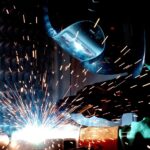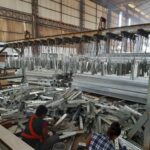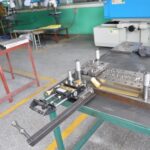Unlocking the Future: Cutting-Edge Technologies in Metal stamping
Metal stamping, once a traditional manufacturing process, is now undergoing a revolution thanks to cutting-edge technologies. These innovations are transforming the way stamping parts are manufactured, making the process more efficient, precise, and versatile than ever before.
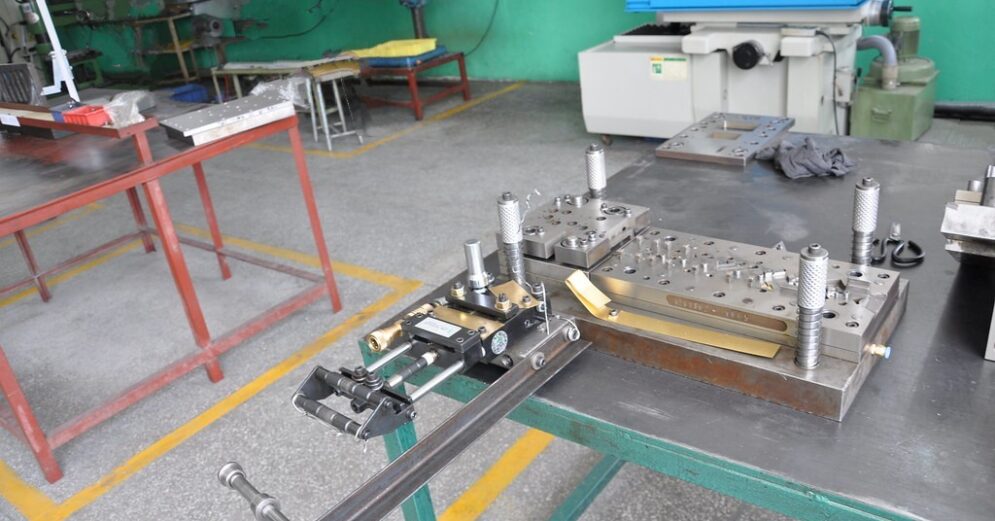
The Rise of Automation
Gone are the days of manual labor dominating the metal stamping floor. With the advent of automation, robots are now taking center stage at engineering industries. These high-tech machines can perform intricate tasks with speed and accuracy, significantly reducing production times and costs. From loading materials to operating stamping presses, robots are revolutionizing metal stamping operations.
Precision Engineering with 3D Printing
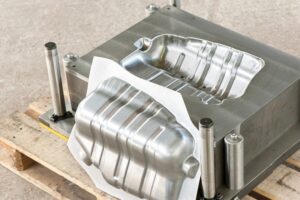
Another game-changer in precision stamping is the integration of 3D printing technology. This cutting-edge innovation allows manufacturers to create highly complex stamping tooling and dies with unparalleled precision. By layering materials according to digital designs, 3D printing enables stamping manufacturing of intricate stamping parts that were previously impossible to manufacture. Plus, the flexibility of 3D printing allows for rapid prototype and design iterations, saving both time and money in the production process.
Smart Sensors and IoT Integration
In the era of Industry 4.0, metal stamping companies are harnessing the power of smart sensors and Internet of Things (IoT) technology to optimize their metal parts manufacturing. These sensors are embedded in stamping machines and stamping tooling to monitor various parameters in real-time, such as temperature, pressure, and vibration. By collecting and analyzing data, manufacturers can identify potential issues before they escalate, preventing costly downtime and ensuring consistent quality in stamping parts.
Embracing Virtual Reality for Training and Simulation
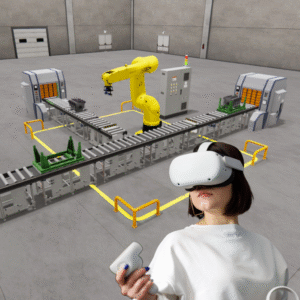
Virtual Reality (VR) is not just for gaming anymore—it’s also revolutionizing the way metal stamping operators are trained. With VR technology, trainees can immerse themselves in realistic simulations of stamping processes, allowing them to practice and perfect their skills in a safe and controlled environment. This innovative training approach reduces the risk of accidents and errors in metal stamping companies, while also shortening the learning curve for new employees.
Looking Ahead: The Future of Metal stamping
As technology continues to evolve, the future of metal stamping looks brighter than ever. From advanced automation and 3D printing to smart sensors and VR training, these cutting-edge technologies are shaping the way precision metal products are manufactured. By embracing these innovations, metal stamping companies can stay ahead of the competition, delivering high-quality stamping parts with greater efficiency and precision.
The Green Side of Metal Stamping: Environmental Impacts and Sustainable Practices
Precision metal stamping may not seem like the most eco-friendly industry, but manufacturers are taking strides towards sustainability. Let’s explore the environmental impacts of metal stamping services and the innovative practices that are helping to reduce its footprint on the planet.
Understanding the Impact
Metal stamping involves shaping metal sheets into various parts and components, often using significant amounts of energy and resources. From the extraction of raw materials to the production process itself, metal stamping can have environmental repercussions, including energy consumption, waste generation, and greenhouse gas emissions.
Embracing Sustainable Practices
Fortunately, metal stamping companies are increasingly adopting sustainable practices to minimize their environmental impact. For example, stamping manufacturing is done using servo-driven presses instead of traditional mechanical presses. Servo-driven presses allow for precise control over the stamping process, which not only improves the quality of precision metal products but also reduces energy consumption by up to 50%. Additionally, the use of LED lighting in factories instead of conventional lighting can reduce energy use by up to 30%.
Furthermore, stainless steel stamping parts offer durability, longer service life and recyclability, making it an eco-friendly choice for various applications.
Advanced stamping design techniques, such as finite element analysis (FEA) reduces material waste and enhances the quality of stamping parts.
Recycling and Waste Reduction
Another crucial aspect of sustainability in metal stamping is recycling and waste reduction. Many metal stamping companies have implemented recycling programs to reuse scrap metal generated during the stamping manufacturing. By melting down scrap metal and reusing it in production, engineering industries can conserve natural resources and minimize waste sent to landfills.
A case in point is Toyota’s metal stamping plants where they recycle 100% of their stamping parts scrap, saving 7,000 tons of raw material annually. Similar procedure is followed at Ford and GM’ sheet metal manufacturing plants.
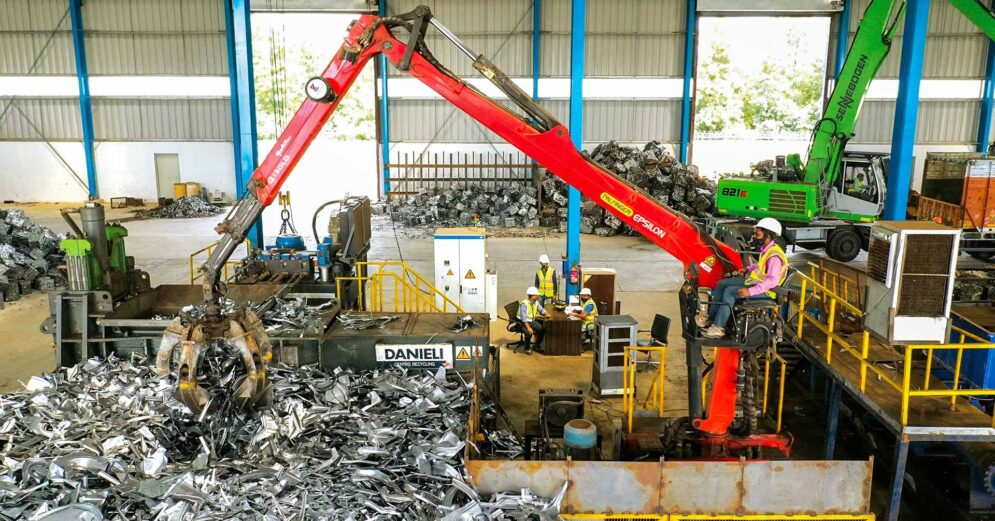
Innovative Materials and Design
In addition to recycling, metal stamping companies are exploring innovative materials and design techniques to enhance sustainability. For example, using lightweight aluminum stamping instead of steel can reduce the environmental impact of stamped parts by lowering energy consumption during stamping manufacturing and transportation.
Collaboration and Certification
Furthermore, collaboration with suppliers and customers is essential for promoting sustainability in the sheet metal manufacturing industry. By working together to develop and implement sustainable practices throughout the supply chain, stamping companies can amplify their environmental efforts and make a more significant impact.
For ex, Honda works closely with its suppliers to implement eco-friendly practices, achieving a 30% reduction in CO2 emissions across its supply chain.
Looking Towards a Greener Future
While there is still progress to be made, the stamping manufacturing industry is moving towards a greener future. By prioritizing sustainability and embracing innovative practices, companies providing metal stamping services can minimize their environmental footprint and contribute to a healthier planet for future generations.
Exploring Success Stories: Case Studies of Innovative Metal Stamping
Let’s delve into some real-life cases of innovation in the stamping parts industry. These examples demonstrate how metal stamping companies are extending the frontiers of conventional stamping manufacturing practices to achieve remarkable results.
Revolutionizing automotive metal stamping
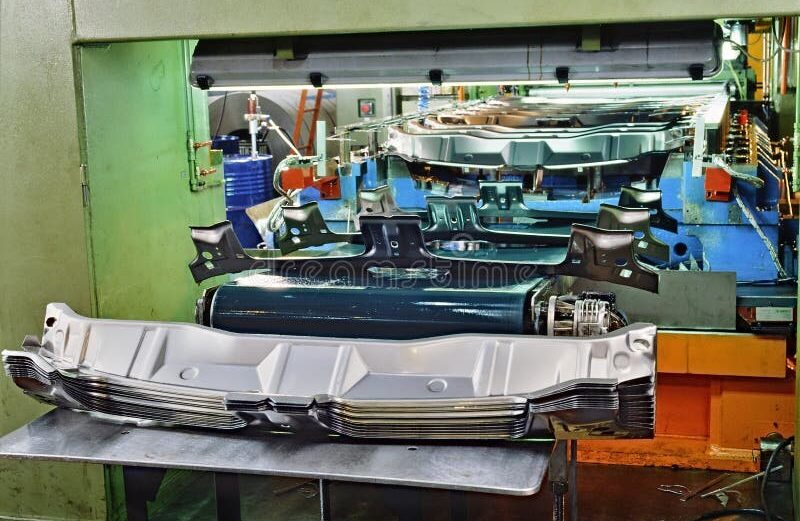
A good example of innovation is well illustrated in the automobile metal stamping industry.
A car maker company adopted a new progressive die stamping process to manufacture intricate auto components. By introducing advanced stamping design technology and integrating robotics, they achieved significant improvements in both efficiency and part quality as detailed below:
Progressive Die Stamping Process:
- Cycle Time Reduction: The implementation of progressive die stamping reduced cycle times from 15 seconds per part to 10 seconds, resulting in a 33% increase in production speed.
- Precision and Tolerances: The new process achieved a dimensional tolerance of ±0.02 mm, significantly enhancing the precision of the stamped parts.
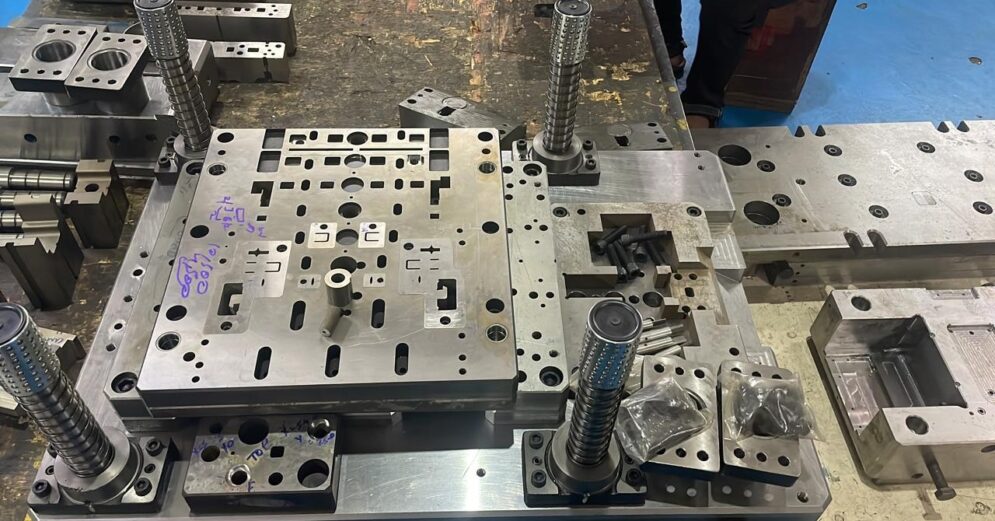
Stamping Design Technology:
-
- CAD/CAM Integration: The use of advanced CAD (Computer-Aided Design) and CAM (Computer-Aided Manufacturing) software enabled the creation of complex stamping tooling with enhanced accuracy.
- Finite Element Analysis (FEA): This technology was employed to simulate and optimize the precision metal stamping process, reducing material waste by 20% and ensuring optimal die life.

Robotics Integration:
-
- Automated Material Handling: Robots were used for loading and unloading sheets into the custom metal stamping, which reduced manual handling time by 50% and increased overall productivity.
- Quality Control: Vision systems integrated with robotics performed real-time inspections, achieving a defect detection rate of 99.5%.
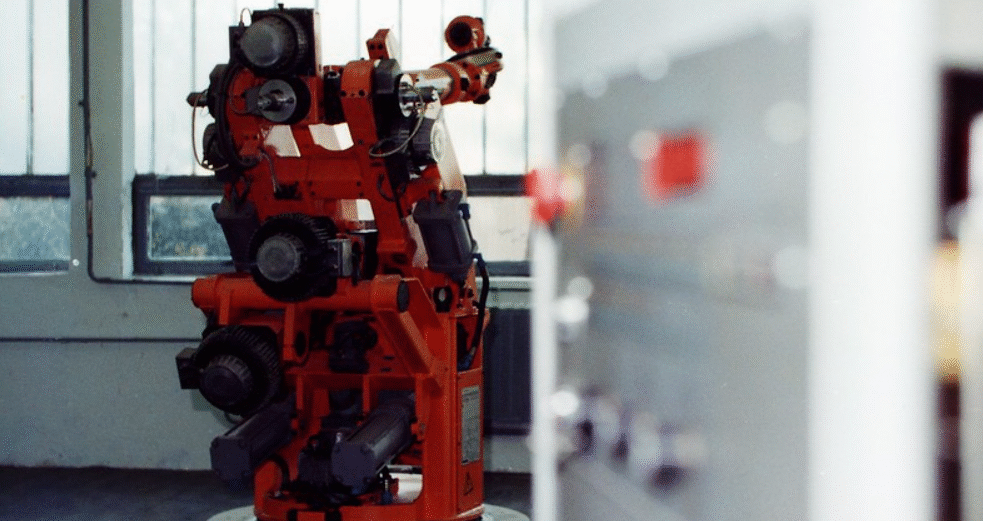
Cost Reduction and Efficiency:
-
- Production Output: The enhanced process increased production output from 300 stamping parts per hour to 450 parts per hour, a 50% increase.
- Cost Savings: Overall production costs were reduced by 8%, primarily due to lower material waste, reduced cycle times, and energy savings.
Enhancing Aerospace Component Manufacturing
In the aerospace industry, a leading aircraft manufacturer by integrating 3D printing with conventional sheet metal stamping, achieved unprecedented capabilities in creating complex geometries, resulting in parts that are both lightweight and structurally robust. This innovative approach not only reduced material usage but also improved fuel efficiency and overall aircraft performance. Read below to know what they did :
1. Hybrid Manufacturing Process:
Sheet Metal Stamping: Was utilized for creating primary shapes and structures with high precision, using advanced stamping tools.
3D Printing Integration: Employed to add intricate features and internal geometries that are difficult to achieve with stamping alone. This combination allowed for the creation of stamping parts with complex internal channels for optimized airflow and reduced weight.
2. Material Efficiency:
Material Reduction: The hybrid process reduced material usage by approximately 13% compared to traditional methods. By precisely adding material only where needed, waste was minimized. Also progressive die stamping was implemented which resulted in material savings.
Weight Reduction: Precision metal stamping components produced using this method were up to 8% lighter, contributing to significant improvements in fuel efficiency.
3. Mechanical Properties:
Strength-to-Weight Ratio: The stamping parts exhibited a strength-to-weight ratio increase of 20%, ensuring that the components were not only lighter but also met stringent aerospace strength requirements.
Material Specifications: Utilized high-strength alloys (e.g., 7075-T6) for aluminum stamping and titanium alloys (e.g., Ti-6Al-4V) for both the stamped and printed sections to maintain structural integrity and durability.
4. Precision and Tolerances:
Dimensional Accuracy: Achieved tolerances of ±0.01 mm, ensuring the precise fit and function of each stamping part within the aircraft.
Surface Finish: The hybrid process produced precision metal stamping components with a surface finish of Ra 0.4 µm, reducing the need for post-processing and enhancing aerodynamic performance.
5. Performance Enhancements:
Fuel Efficiency: The lighter components contributed to an overall 4 % improvement in fuel efficiency for the aircraft, translating to substantial cost savings over the aircraft’s operational lifespan.
Performance Metrics: Enhanced performance metrics such as improved thrust-to-weight ratio and reduced drag due to optimized stamping designs.
By adopting these innovative stamping design techniques and utilizing advanced stamping tools, the aircraft producer not only improved the efficiency and performance of their products but also demonstrated a commitment to sustainability.

Exploring Future Trends in Metal Stamping
Curious about the future of precision stamping? Let’s delve into emerging trends and predictions that are shaping the next frontier of this dynamic engineering industry.
The Evolution of Smart Manufacturing
Get ready for the revolution in metal stamping companies through the integration of smart manufacturing technologies. As AI, ML and IoT technologies are on the rise, the factories of the future will be intelligent and connected. Picture machines that are able to self-detect problems in the stamping parts, modify parameters on the fly, and share information with other presses on the stamping manufacturing floor. Smart manufacturing is expected to take efficiency and productivity to another level and is considered as the new age in precision stamping.
Sustainability as a Cornerstone
In the future, sustainability will be the main driver in metal stamping services.
This includes recycling scrap metal and use of energy efficient processes to help drive innovation in the area of precision metal products. Adopting green technologies not only protects the earth but also attracts customers who are conscious of the environment, underscoring a commitment to environmental stewardship.
The Rise of Additive Manufacturing
Additive manufacturing as a concept is relatively new in the manufacturing world, but it has been growing tremendously in the recent past.
See how the additive manufacturing (3D printing) has been incorporated into metal stamping operations. This technology as it develops allows for complex stamping tooling and precision metal products to be produced with less scrap and in less time. Picture stamping tooling and molds built up in layers, and that means that there is great design freedom and the ability to create custom metal stamping. Additive manufacturing is expected to change the traditional ways of production by providing new opportunities and ways of production.
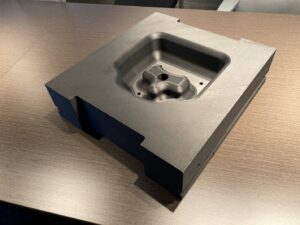
Automation and Robotics: Revolutionizing Workflows
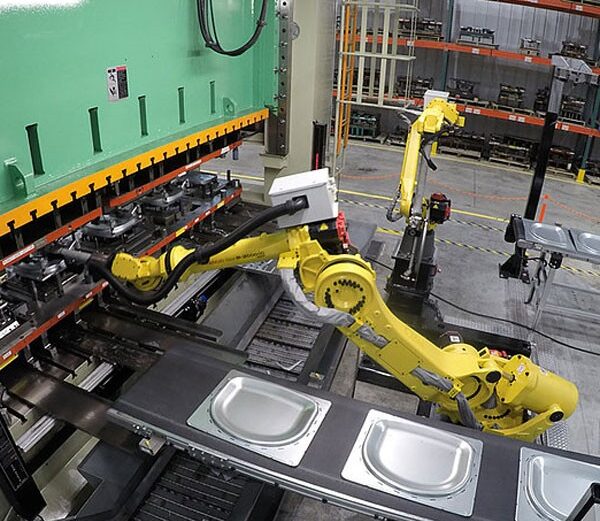
The future of metal stamping is being optimized with automation and robotics. Moving forward, there will be an increase in the use of robots in performing routine operations in the stamping manufacturing environment. Robotic arms controlling the stamping presses and self-driving vehicles handling material flow are examples of how automation improves productivity, safety, and effectiveness for precision metal stamping. It also enables human workers to concentrate on complex tasks, thus increasing innovation and productivity.
Augmented Reality (AR) Redefining Training
Step into the future of training with augmented reality (AR) in metal stamping. AR technology enables operators to receive immersive, hands-on training in virtual environments. Imagine troubleshooting stamping processes and mastering equipment operations through holographic overlays and simulations—all without leaving the training room. AR training revolutionizes learning, making it more engaging, effective, and accessible, thereby enhancing skill development and operational proficiency.
As metal stamping evolves with these cutting-edge technologies, it promises to deliver greater precision, efficiency, and sustainability.
So, buckle up and get ready for a thrilling ride into the innovative future of metal stamping!




